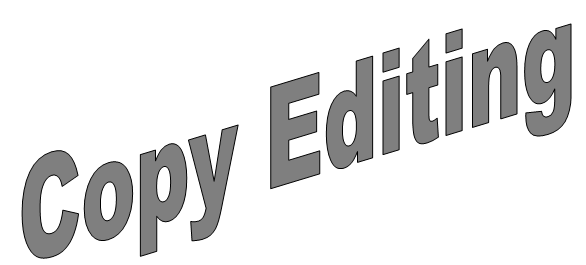Volume 5, Issue 2 (12-2023)
pbp 2023, 5(2): 131-136 |
Back to browse issues page
1- Medicine, Quran and Hadith Research Center, Baqiyatallah University of Medical Sciences, Tehran, Iran
2- Department of Biology, Faculty of Science, Razi University, 67149-67346, Kermanshah, Iran ,yousofnam@yahoo.com
2- Department of Biology, Faculty of Science, Razi University, 67149-67346, Kermanshah, Iran ,
Abstract: (2223 Views)
Objectives: One of the application areas of nanobiotechnology is the use of silver nanoparticles (Nanosilver particles) for a new solution in medical treatments. In the present study, the researchers investigate the effect of nano silver particles of the aqueous extract of Artemisia aucheri on skin wound healing among male rats.
Material and Methods: After creating wounds in 48 rats, they were randomly divided into 6 groups. Treated with 0.2% AgNPs ointment, 0.2% AgSO4 ointment, 0.2% A. aucheri ointment, 3% tetracycline ointment, Eucerin basal ointment, and untreated control group. The tested groups were treated for ten days.
Results: Treatment with AgNPs ointment significantly increased the amount of vascular contraction, hexose amine and hydroxyproline, and fibrocyte and fibrocyte to fibroblast ratio. Also, in the mentioned group, the wound area and the total number of cells, neutrophils and lymphocytes decreased significantly compared to other groups.
Conclusion: The nano silver particles of the aqueous extract of A. aucheri accelerate the healing process of skin wounds and reduce the time required for complete wound healing.

Material and Methods: After creating wounds in 48 rats, they were randomly divided into 6 groups. Treated with 0.2% AgNPs ointment, 0.2% AgSO4 ointment, 0.2% A. aucheri ointment, 3% tetracycline ointment, Eucerin basal ointment, and untreated control group. The tested groups were treated for ten days.
Results: Treatment with AgNPs ointment significantly increased the amount of vascular contraction, hexose amine and hydroxyproline, and fibrocyte and fibrocyte to fibroblast ratio. Also, in the mentioned group, the wound area and the total number of cells, neutrophils and lymphocytes decreased significantly compared to other groups.
Conclusion: The nano silver particles of the aqueous extract of A. aucheri accelerate the healing process of skin wounds and reduce the time required for complete wound healing.

Type of Study: Research |
Subject:
Herbal Drugs
Received: 2022/11/22 | Accepted: 2022/11/23 | Published: 2022/11/23
Received: 2022/11/22 | Accepted: 2022/11/23 | Published: 2022/11/23
References
1. Zis P, Hadjivassiliou M (26 February 2019). "Treatment of Neurological Manifestations of Gluten Sensitivity and Coeliac Disease". Curr Treat Options Neurol (Review). 21 (3): 10.
2. Sanders, T.; Liu, Y.; Buchner, V.; Tchounwou, P. B. (2009). "Neurotoxic effects and biomarkers of lead exposure: A review". Reviews on Environmental Health. 24 (1): 15–45.
3. Li Y, Peppelenbosch MP (April 2020). "Hepatitis E virus and neurological manifestations". Journal of the Neurological Sciences. 423: 117388.
4. Abugable AA, Morris JLM, Palminha NM, Zaksauskaite R, Ray S, El-Khamisy SF (Sep 2019). "DNA repair and neurological disease: From molecular understanding to the development of diagnostics and model organisms". DNA Repair (Amst.). 81: 102669.
5. Roelofs, K.; Pasman, J. (2016). "Stress, childhood trauma, and cognitive functions in functional neurologic disorders". Handbook of Clinical Neurology. 139: 139–155.
6. Simon JE, Morales MR, Phippen WB, Vieirn RF and Hao Z. Basil: A source of aroma compound and a popular culinary and ornamental herb. Perspectives on New Crops and New Uses 1999; 499 - 505.
7. Labra M, Milele M, Ledda B, Grassi F, Mazzei M and Sala F. Morphological characterization essantial oil composition and DNA genotyping of Ocimum basilicum L.cultivars. Plant Science 2004; 167: 725 - 31.
8. Ghahraman A. Plant Systematics -Chromophytes of Iran (In Persian). Tehran University Press. Tehran. Vol 1 - 4. (1992 – 1996), 2778 pp.
9. Judd WS, Campbell, Kellogg, Stevens, Plant Systematics; A Phylogenetic Approach (In Persian). Isfahan University Press. Isfahan. 1999, 470 pp.
10. Davis JM. Basil, North Carolina basil production guide, North Carolina cooperative extension service. N.C. state university, Raleigh, 1997, 125 - 7.
11. Naghdi Badi H, Dadvand M, Nasri M, Makkizadeh M and Omidi H. Changes in Essential Oil Content and Yield of Basil in Response to Different Levels of Nitrogen and Plant Density. J.Medicinal Plants 2008; 27: 60 - 70.
12. Rahimi A, Mehrafarin A, Naghdi Badi H and Khalighi-sigaroodi F. Effects of bio-stimulators and bio-fertilizers on morphological traits of basil (Ocimum bacilicum L.). Annals of Biological Research 2013; 4 (5): 146 - 51.
13. Nazari M, Mehrafarin A, Naghdi Badi H and Khalighi-sigaroodi F. Morphological traits of sweet basil (Ocimum basilum L.) as influenced by foliar application of methanol and nano-iron chelate fertilizers. Annals of Biological Research 2012; 3 (12): 5511 - 4.
14. Lewinsohn E, Ziv-Raz I, Dudai N, Tadmor Y, Lastochkin E, Larkov O, Chaimovitsh D, Ravid U, Putievsky E, Pichersky E and Shoham Y. Biosyntesis of estragol and mathyle – eugenol in sweet Basil (Ocimum basilicum L.) developmental and chemotypic association of allylphenol omethyletransferase activities. Plant Science 2000; 160: 27 - 35.
15. Hassani A, Omidbaigi R and Heidari Sharifabad H. Effect of Different soil mouisture leves on Growth, Yield and accumulation of compatible solutes in basil (Ocimum basilicum). Journal of Water and Soil Sciences 2003; 17 (2): 210 - 9.
16. Svoboda KP and Hampson JB. Bioactivity of essential selected oils of temperate aromatic plants: antibacterial, antioxidant, antiinflammatory and other related pharmacological activities. IENICA Conference, Specialty Chemicals for the 21st Century: Intermediary Products, Cosmetics, Perfumes, and Medicinal Applications, 1999, pp: 1 – 17.
17. Dolatkhahi M, Ghorbani Nohooji M, Mehrafarin A, Amini Nejad GH and Dolatkhahi A. Ethnobotanical study of medicinal plants in Kazeroon, Iran: Identification, distribution and traditional usage (In Persian). 2012; J. Med. Plants 42: 163 - 78.
18. Dolatkhahi M and Ghorbani Nohooji M. The most used medicinal plant species of Dashtestan (Bushehr Province), emphasizing on their traditional usages (In Persian). J. Med. Plants 2013; 46: 85 - 105.
19. Pujol-Autonell I, Mansilla M-J, Rodriguez-Fernandez S, Cano-Sarabia M, Navarro-Barriuso J, Ampudia R-M, et al. Liposomebased immunotherapy against autoimmune diseases: therapeutic effect on multiple sclerosis. Nanomedicine 2017; 14(12): 1231-42.
20. Eitan E, Hutchison ER, Greig NH, Tweedie D, Celik H, Ghosh S, et al. Combination therapy with lenalidomide and nanoceria ameliorates CNS autoimmunity. Experimental Neurology 2015; 27(3): 151-60.
21. Ahmeda A, Zangeneh MM, Mansooridara S, Malek Z, Zangeneh A. Suppressor capacity of iron nanoparticles biosynthesized using Salvia chloroleuca leaf aqueous extract on methadone-induced cell death in PC12: Formulation a new drug from relationship between the nanobiotechnology and neurology sciences. Appl Organometal Chem. 2020;34(3): e5355.
22. Kehkashan Arshad Q, Ahsana D, Bina S S, Nurul K, Huma A, et al. Anticancer activity of Ocimum basilicum and the effect of ursolic acid on the cytoskeleton of MCF-7 human breast cancer cells. Letters in Drug Design & Discovery. 2010; 726 -736.
23. Samiei A, Tabatabaei-Yazdi F, Mazaheri Tehrani M. An investigation into the antioxidant activity, phenolic compounds, antimicrobial effect and interaction of the essential oils of Curcuma longa and Ocimum basilicum on some pathogenic bacte. 2018; 74(15): 99 –107.
24. Hanachi P, Roshanak Zarringhalami , Reihaneh Ramezani Tamijani. Investigation of Antioxidant Properties of Polygonatum orientale Desf and Tilia dasystyla Extracts by Different Methods and Solvents. Hormozgan Med J. 2018 ; 22(4):e86504.
25. Tooryan F, Azizkhani M. Antioxidant effect of the aerial parts of basil (Ocimum basilicum) and clary sage (Salvia sclarea) essential oils in Iranian white cheese. Iranian Food Science and Technology. 2017; 346-362.
26. Hashemi SMB, Ghorashi SH, Hadizadeh Z, Zarei Z. et al. Effect of amplitude of ultrasound-assisted solvent extraction and extraction temperature on the kinetics, thermodynamics , antioxidant and antimicrobial activity of Ocimum basilicum L. extract. Journal of agriculture science and thecnology. 2017; 19: 1517–1526.
27. Sameie A, Tabatabie-Yazdi F, Mazaheri Tehrani M. An investigation into the antioxidant activity, phenolic compounds, antimicrobial effect and interaction of the essential oils of Curcuma longa and Ocimum basilicum on some pathogenic bacteria. Food Science and Technology journal. 2018; 15(74): 99-107.
28. Juliani HR, Simon JE. Antioxidant Activity of Basil. Trends in new crops and new uses. 2002; 575–579.
29. Liu G, Garrett MR ,Men P, Zhu X, Perry G, Smith MA. Nanoparticle and other metal chelation therapeutics in Alzheimer disease. (BBA)-Molecular B of Disease 2005; 174(1): 246-52.
30. Hider RC, Roy S, Ma YM, Le Kong X, Preston J. The potential application of iron chelators for the treatment of neurodegenerative diseases. Metallomics 2011; 12(3): 239-49.
31. Zhang C, Zheng X, Wan X, Shao X, Liu Q, Zhang Z, et al. The potential use of H102 peptide-loaded dual-functional nanoparticles in the treatment of Alzheimer's disease. J of Co Release 2014; 19(2): 317-24.
32. Abdolmaleki A, Asadi A, Ardabili M, Namin I. Importance of Nano Medicine and New Drug Therapies for Cancer. Ad Ph Bul 2020; 12(3): 112-18.
33. Trombino S, Cassano R, Ferrarelli T, Barone E, Picci N, Mancuso C. Trans-ferulic acidbased solid lipid nanoparticles and their antioxidant effect in rat brain microsomes. Colloids and Surfaces B: Biointerfaces 2013; 10(9): 273-9.
34. Huang M, Hu M, Song Q, Song H, Huang J, Gu X, et al .GM1-modified lipoprotein-like nanoparticle: Multifunctional nanoplatform for the combination therapy of Alzheimer’s disease. ACS Nano 2015; 36(9): 10801-16.
35. De Boer A, Gaillard P. Drug targeting to the brain. An Rev Ph Toxicol 2007; 4(7): 323-55.
36. Jeon M-T, Kim K-S, Kim ES, Lee S, Kim J, Hoe H-S, et al. Emerging pathogenic role of peripheral blood factors following BBB disruption in neurodegenerative disease. Ag Re Reviews 2021; 41(10) 101-13.
37. Das M, Patil S, Bhargava N, Kang J-F, Riedel LM, Seal S, et al. Auto-catalytic ceria nanoparticles offer neuroprotection to adult rat spinal cord neurons. Biomaterials 2007; 2(8): 1918-25.
38. Germain M, Caputo F, Metcalfe S, Tosi G, Spring K, Åslund AK, et al. Delivering the power of nanomedicine to patients today. J of C Release 2020; 32(6): 164-71.
39. Gallud A, Klöditz K, Ytterberg J, Östberg N, Katayama S, Skoog T, et al. Cationic gold nanoparticles elicit mitochondrial dysfunction: A multi-omics study. Sc Reports 2019; 11(9):1-19.
40. Lee CS, Leong KW. Advances in microphysiological blood-brain barrier (BBB) models towards drug delivery. Cu Op in Biotechnology 2020; 6(6): 78-87.
41. Sarkar S, Levi-Polyachenko N. Conjugated polymer nano-systems for hyperthermia, imaging and drug delivery. Ad Dr De Reviews 2020; 16(3): 40-64.
42. Wu Q, Yang L, Wang X, Hu Z. Mesostructured carbon-based nanocages: an advanced platform for energy chemistry. Sc Ch Chemistry 2020; 6(3): 665-81.
43. Soluki M, Mahmoudi F, Abdolmaleki A, Asadi A, Sabahi Namini A. Cerium oxide nanoparticles as a new neuroprotective agent to promote functional recovery in a rat model of sciatic nerve crush injury. B J of Neurosurgery 2020; 14(5): 1-6.
44. Liying H ,Yumin S, Lanhong J, Shikao S. Recent advances of cerium oxide nanoparticles in synthesis, luminescence and biomedical studies: a review. J of Rare Earths 2015; 3(3): 791-9.
45. Radosinska J, Jasenovec T, Radosinska D, Balis P, Puzserova A, Skratek M, et al. ltrasmall superparamagnetic iron-oxide nanoparticles exert different effects on erythrocytes in normotensive and hypertensive rats. Biomedicines 2021; 11(9): 377-84.
46. Hooshmand S, Hayat SM, Ghorbani A, Khatami M, Pakravanan K, Darroudi M. Preparation and Applications of Superparamagnetic Iron Oxide Nanoparticles in Novel Drug Delivery Systems :An Overview. Cu Me Chemistry 2021; 12(8): 777-99.
47. Mottaghitalab F, Farokhi M, Zaminy A, Kokabi M, Soleimani M, Mirahmadi F, et al. A biosynthetic nerve guide conduit based on silk/SWNT/fibronectin nanocomposite for peripheral nerve regeneration. PloS one 2013; 12(8): 74-81.
48. Alghani W, Karim M, Bagheri S, Zaharinie T, Gulzar M. Formulation, tribological performance, and characterization of base oil with ZnO, graphene, and ZnO/grapheme nanoparticles additives. Mat und Werkstofftechnik 2020; 5(1): 1515-32.
| Rights and permissions | |
 |
This work is licensed under a Creative Commons Attribution-NonCommercial 4.0 International License. |




